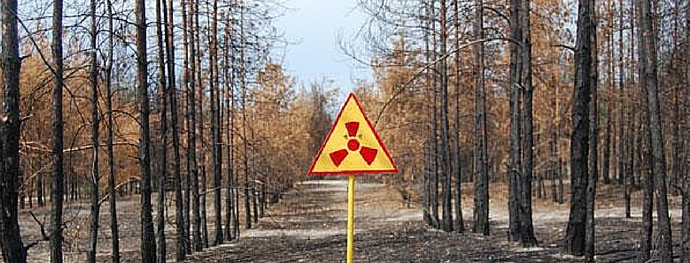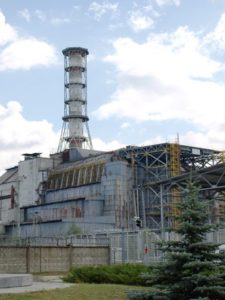
Chernobyl 30 Years On
On April 26, 1986, a horrific accident took place at the Chernobyl nuclear power plant located in Ukraine – part of the former Soviet Union. Originally there were four reactors and they were constructed between 1970 and 1983. The disaster at the Chernobyl plant was the worst of its kind in history, and even though the 30th anniversary of the tragedy is approaching, an exclusion zone (a radius of thirty kilometers) still exists around Chernobyl and public access is forbidden.

The nearest inhabited city was Pripyat and at the time of the meltdown it had 50,000 people, many of whom held jobs at the power plant. No one lives there now. What went wrong at Chernobyl on that day in 1986, and who was at fault?
Causes of the Accident
There was a special test scheduled, a low power test conducted to find out how long turbines would spin and give power to the main circulating pumps if the electricity supply were cut off. The test involved two steps: insert all control rods halfway to simulate a blackout, then disconnect one of the turbines and allow its inertia to generate power, which would be measured.
In a report published in August 1986, the blame for the Chernobyl incident was placed squarely on the workers who disabled the automatic shutdown mechanisms during the test. This was no doubt a mistake due to inexperience. However, new insights revealed that a bigger problem was the reactor itself, the Soviet RBMK-1000. This type of reactor differed from all other reactors in one key aspect: it used graphite as a moderator to continue a nuclear reaction in the core. At around 1:23 a.m. on April 26, extremely hot nuclear rods were placed in cool water, causing an incredible amount of steam. There was more reactivity in the core and this led to a power surge – a rather big one. An explosion blew the 1,000-ton plate off the top of the reactor and radiation made its way into the atmosphere. A second explosion spread burning graphite and damaged an adjacent reactor.
How the Accident Affected the Local Population
More than 100,000 people were evacuated from their homes in Ukraine, Belarus, and the Russian Federation. The people most affected were the “liquidators,” cleanup crews assigned to put out fires and bury radioactive materials. Unfortunately, they didn’t know what to expect until they were in the middle of the chaos, and unfortunately, weren’t fully recognized or fairly compensated for their work. Pripyat was emptied within three and a half hours, and no one has returned since.
It’s generally agreed that cases of thyroid cancer are greater in people who lived in the vicinity of Chernobyl when the reactor went up. Many of these individuals were children at the time.
Conclusion
The Chernobyl disaster is one of those traumatic events which is hard to come to terms with even after three decades. Authorities in Moscow were reluctant to admit the RBMK-1000 reactor was flawed, and this was due to a culture of secrecy that existed in the Soviet state. Pripyat is now marketed as an “extreme destination,” where, in the absence of humans, nature has started to take over the deserted community.
